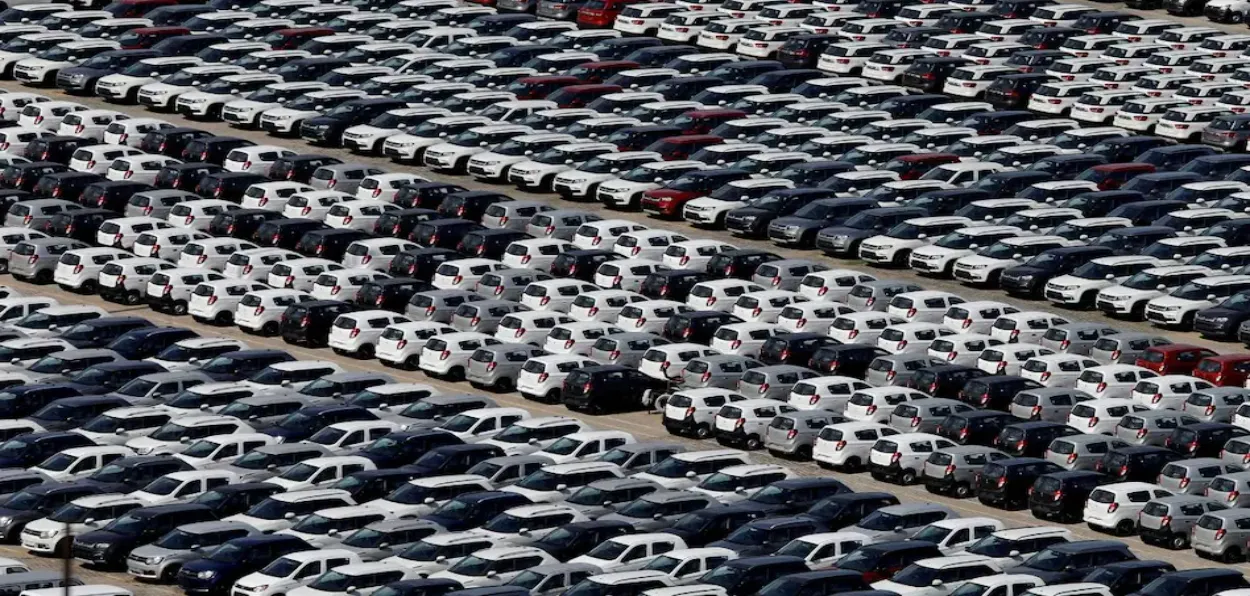
 Sushma Ramachandran
Sushma Ramachandran
The next big thing on the export front is likely to be automobiles. Major car manufacturers are making plans to ensure that India becomes a global hub for exports. There are already signs of progress with the latest data for April showing that passenger vehicle exports have risen by as much as 21.1 percent while two-wheeler exports have shot up by 24.3 percent.
State of Economy
Undoubtedly, this spurt comes on the back of a low base as overall automobile exports fell by 5.5 percent in 2023-24, according to the Society of Indian Automobile Manufacturers (SIAM). This decline has been a result of continuing geopolitical tensions, a slowing global economy, and a foreign exchange crisis in some key markets.
Yet the outlook for the coming year looks increasingly bright as major manufacturers are now increasingly looking to export rather than only focus on the large domestic market. This is especially so in the passenger cars segment. Leading Japanese car companies like Honda, Toyota, and Suzuki are even reported to be gearing up to supply cars to their home market. The plans to send Indian-made vehicles to the quality-conscious Japan market highlight the confidence that these cars will meet the stringent standards for imports in that country.
Some car models are now being made exclusively here and exported both to Japan and Southeast Asia. These are the same manufacturers, it must be recalled, who were wary of investing in this country in the eighties when Suzuki took the plunge and set up a joint venture with the government. Osamu Suzuki was considered a maverick of the Japanese auto ecosystem for having taken this decision in a risky untried market.
Honda and Toyota as well as U.S. and European manufacturers made investments over a decade later. It took them many years to overcome reservations over dealing with the complex bureaucracy and intricate regulations of the Indian economy.
South Korean manufacturers like Hyundai were quicker off the mark and entered the Indian market in 1996. This is probably why their marketing and distribution systems can match Suzuki. Both the joint venture Maruti Suzuki and Hyundai have been the market leaders for many years now. As far as car exports are concerned too, they remain the bigger players. Yet total passenger car export volumes are still not enough to bring India to the list of top ten global exporters.
It will thus take a tremendous effort by the domestic automobile industry to become a major player in world markets. On the plus side, passenger cars showed an upswing of about six percent in exports in 2023-24 The rise in this segment is being attributed to improvement in supply chains as well as easier availability of semiconductors, the key component that had stalled production over the past few years.
The slowdown in demand for other vehicle categories like commercial vehicles and two-wheelers is largely due to a faltering economic revival in major export destinations. Geopolitical tensions including the Ukraine war have hit emerging economies which are among the key markets for commercial vehicles and two-wheelers. Consequent foreign exchange constraints have hit purchasing abilities in these countries, leading to a dip in exports.
Passenger cars, on the other hand, are being shipped to a variety of countries including Mexico, West Asia, and North Africa. South Africa is also emerging as a market especially for electric vehicles while Maruti Suzuki is reported to be sending cars as far away as South America.
There is thus an air of optimism in the automobile industry over export growth in the coming years. This has been aided by the fact that Indian emission and quality norms are now largely up to international standards. This ensures that cars being produced here can meet the exacting standards of developed economies like Japan. It is for this reason that Toyota is reported to be exporting e-drives, a critical component in cars with advanced hybrid technology.
As much as 70 percent of production is being set aside for exports. Similarly, Maruti Suzuki is planning to send its first lot of EVs to Japan and Europe. It has also set targets envisaging a threefold rise in exports over the next five years. The strategy for smaller domestic players like Renault Nissan is to use Indian plants largely for exports.
But to achieve a big leap in exports, much will depend on the ability of the automobile industry to leverage its current advantages. These include lower manufacturing costs, cheaper labour, and availability of skilled manpower along with a highly developed ecosystem of component suppliers. The latter has evolved over the past few decades and become the backbone of the Indian automobile sector. What needs to be seen now is whether the industry will be able to resist the lure of meeting the demand of a large and expanding domestic market and instead move towards an export-oriented approach.
In this context, one must recognise the significant role of the automobile industry in the country’s economy. It accounts for a commanding 45 percent of manufacturing GDP while contributing 7.1 percent to the country’s overall GDP, according to official data. A McKinsey survey last year estimated it provides 37 million direct and indirect jobs and it may create 65 million new jobs by 2026.
Yet another study by consultancy firm Arthur D. Little says India has the potential to become a one trillion dollar auto export powerhouse by 2035. Currently, it is the fourth largest market in the world valued at 250 billion dollars. It is thus abundantly clear that the automobile sector is one of the biggest engines of growth for the economy.
ALSO READ: Indian economy in the pink of health for the next govt. to breathe easy
It is against this backdrop that the new government must pay special attention to an industry that has the potential to become an export powerhouse. The focus on electric vehicles including subsidies on production will have to continue for the time being. Other policies that provide support to exports and promote technology will also have to be evolved to meet the challenge of becoming a major player on the world stage.
